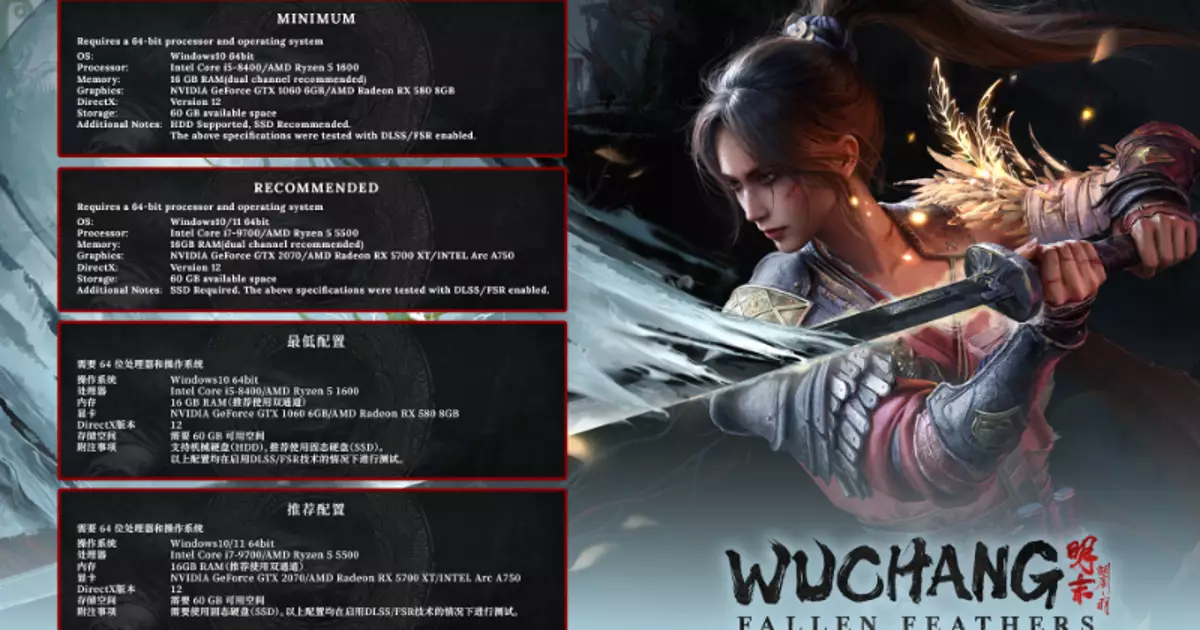Wuchang: Fallen Feathers arrives as a breath of fresh air in the crowded realm of action role-playing games. While borrowing many thematic and gameplay elements from established titles, it boldly infuses its universe with a distinctive Chinese folklore-inspired aesthetic. Unlike the dreary, blood-colored world of Bloodborne, Wuchang’s setting, Shu, has been subtly refined to feel more immersive and less oppressive, transforming what could have been a mere clone into a unique narrative experience. The game’s art direction, with its detailed character designs and atmospheric environments, promises to elevate gamers beyond the standard hack-and-slash treadmill. It’s a visual evolution that could mark a new chapter for mythologically rich Chinese settings in action gaming.
What sets Wuchang apart is its narrative premise—resurrected from the shadows of the Ming dynasty, players assume the role of a pirate swordswoman battling a monstrous feathering plague. This narrative choice offers both a historical allure and an opportunity for inventive storytelling. Instead of the typical dark fantasy tropes, the game’s premise invites players into a world where a disease grants feathery mutations, transforming the landscape into a battleground of bosses, upgrades, and moral choices. It’s a game that balances chaos with storytelling finesse, aiming to deliver a compelling fusion of lore, combat, and player agency.
System Requirements and What They Say About the Game’s Ambitions
The system specifications for Wuchang unveil much about the game’s performance aspirations—and they are surprisingly moderate for a title featuring dynamic combat, flashy effects, and detailed environments. The minimum requirements—an Intel Core i5-8400 or similar AMD Ryzen 5 1600 processor, along with a GTX 1060 or RX 580, 16GB RAM, and a 60GB SSD—suggest that the game is optimized for broader accessibility rather than high-end hardware. This speaks volumes about the developers’ intentions: they want to reach a wide audience without sacrificing visual fidelity or immersive gameplay.
On the other hand, the recommended specs elevate the game’s visual and technical quality, calling for an RTX 2070 or RX 5700 XT, a more recent processor, and an SSD—along with the utilization of DLSS 4 technology for smoother performance. This creates a clear division between casual players and those who seek a premium visual experience, yet the core game remains accessible to mid-range gaming rigs. Such balancing indicates an ambition to marry technological sophistication with inclusivity.
The mention of DLSS 4 hints at Wuchang’s reliance on advanced rendering techniques to enhance performance—particularly important given its high-fidelity visuals and action-packed sequences. It shows that the developers are not content with merely delivering a beautiful game, but they’re aiming for a high-performance experience that remains playable even at high visual settings. This strategic focus on optimization, even on the lower end, bodes well for the game’s reputation among hardware-conscious players.
Gameplay Depth and Player Choice as Cornerstones of Experience
The game’s narrative structure emphasizes choice and consequence, an increasingly vital element in modern RPG design. Wuchang offers players the opportunity to piece together their protagonist’s past and shape their journey toward one of multiple endings. Such depth ensures that each playthrough can be tailored, with morals, alliances, and discovered secrets influencing the outcome.
The use of “Red Mercury” as a means to unlock new combat techniques and enchant weapons is intriguing. It hints at a layered upgrade system that encourages experimentation—whether wielding lightning to smite colossal bird enemies or enhancing weapon attributes to maximize damage. These mechanics suggest a combat system that rewards strategic thinking, timing, and adaptability, elevating it beyond simple button-mashing.
Moreover, Wuchang’s emphasis on narrative choices isn’t just window dressing; it’s integrally tied to the game’s core. Trusting different allies or uncovering secrets will lead to divergent paths, giving players a sense of agency and escape from linear storytelling. It slightly shifts the focus from a pure action game to a nuanced experience rooted in consequence, which could help set a new standard for Chinese-inspired RPGs.
The Cultural and Artistic Significance within the Gaming Landscape
In a gaming landscape often dominated by Western fantasy tropes, Wuchang stands as a potent reminder of the richness of Chinese history and mythology. Its setting—centered around the Ming dynasty and infused with folklore—serves as a cultural counterpoint that might influence future titles seeking to diversify the genre’s storytelling palette.
The developer’s efforts to refine visual storytelling and reduce stereotypes point to an emerging confidence that games can serve as both entertainment and cultural education. The feathered plague motif carries allegorical weight: a beautiful yet devastating disease, perhaps echoing themes of societal decay and transformation. Wuchang’s visual and narrative choices position it as a potentially iconic title that challenges conventions while celebrating cultural heritage.
Aesthetically, the game’s design encourages players to consider the symbolism behind feathers, monsters, and the environment. It’s not merely about defeating enemies but engaging with a layered mythological fabric—one that promises to resonate on both a thematic and aesthetic level. If executed well, Wuchang could inspire other developers to explore and elevate local histories in global gaming discourse.
—
Overall, Wuchang: Fallen Feathers embodies a bold attempt to carve a niche within the action-RPG universe. Its focus on cultural storytelling, strategic gameplay, and modern technology indicates a project that is both ambitious and thoughtfully designed. Whether it will redefine the genre or simply add a compelling chapter to it remains to be seen, but its potential to challenge, inspire, and entertain cannot be dismissed.


Leave a Reply